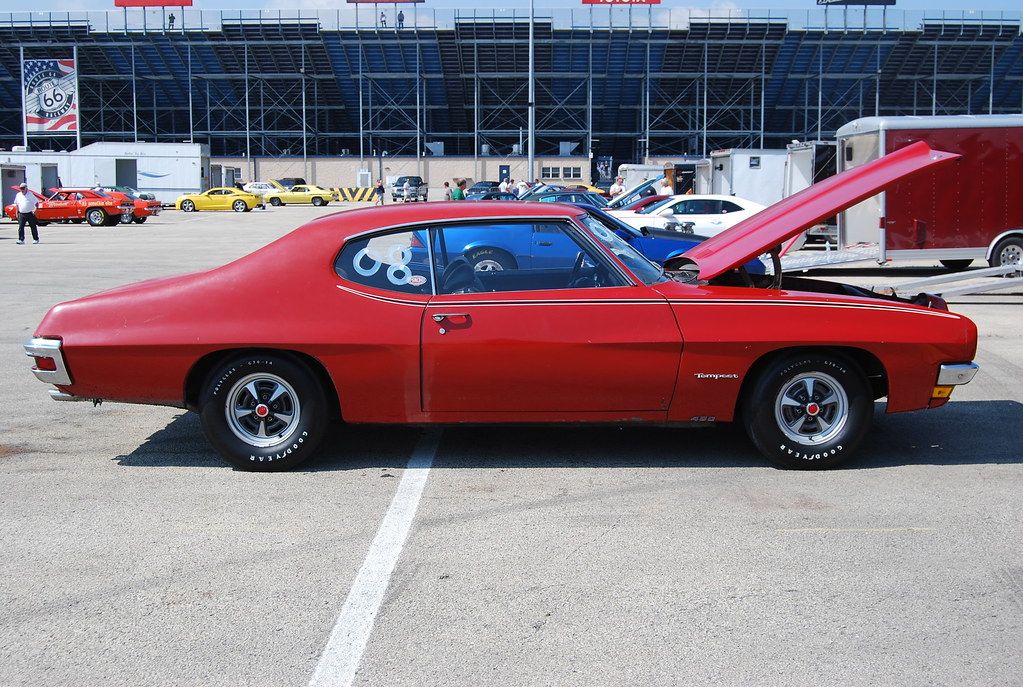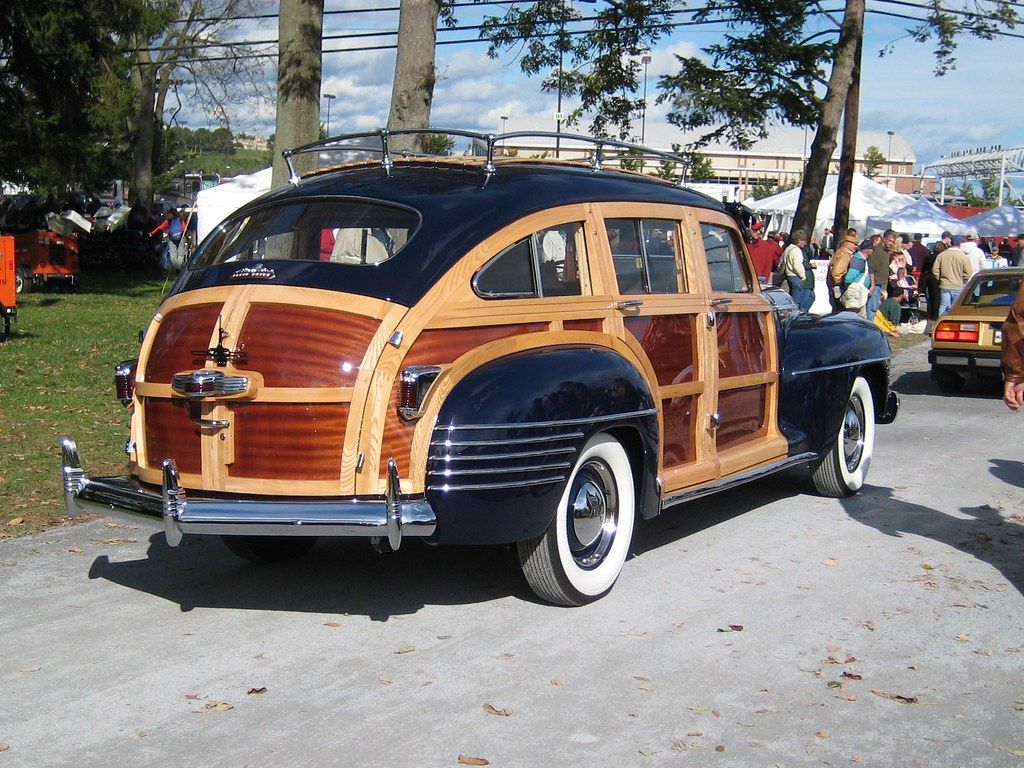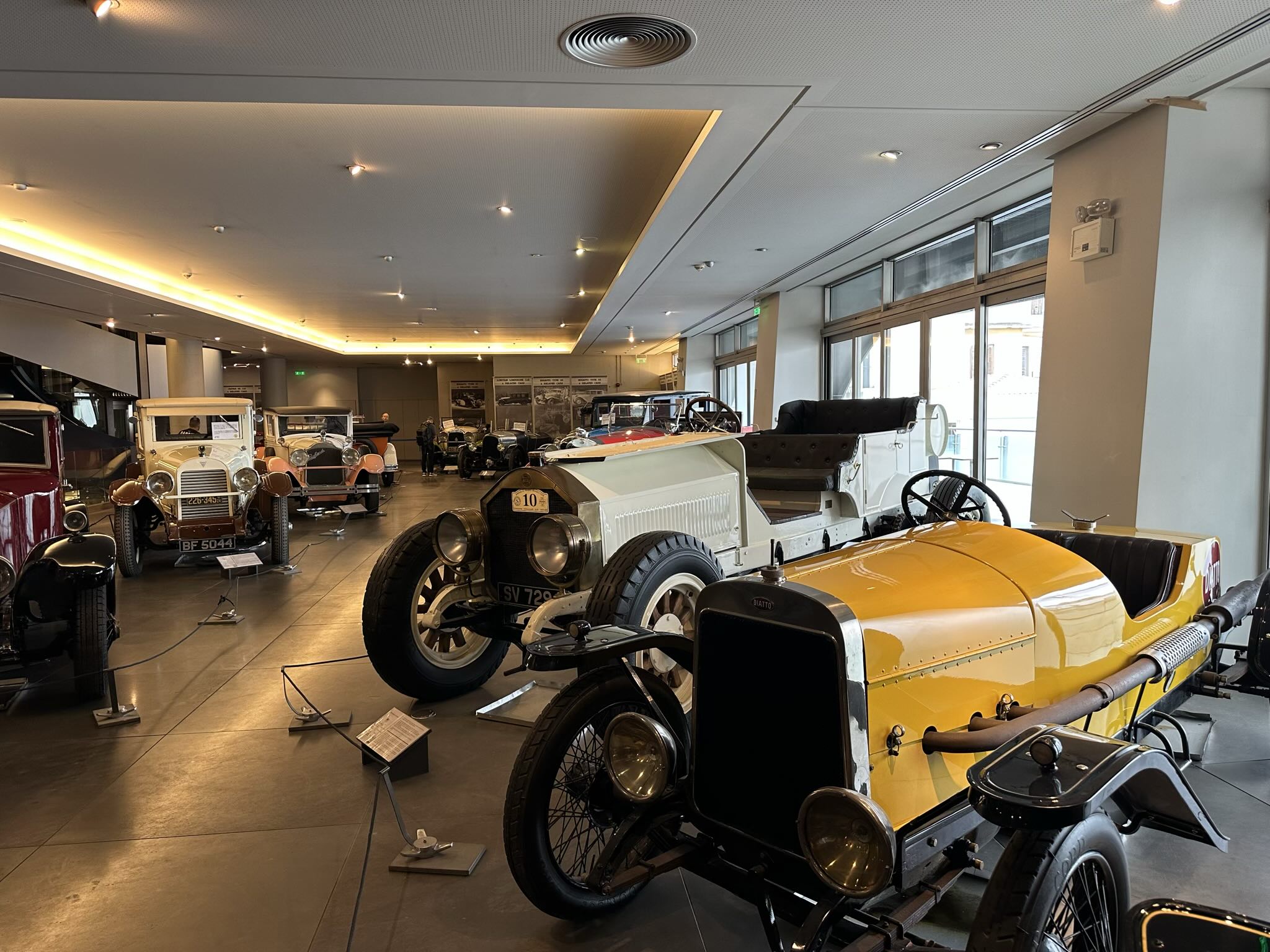
The world of automotive collecting is a fascinating and often unpredictable realm, where passion, nostalgia, and financial acumen converge. For decades, the spotlight at prestigious auctions shone predominantly on European exotica – vintage Ferraris, classic Porsches, and grand Mercedes-Benz machines that commanded astronomical prices. These titans of motoring heritage have long set the benchmark for desirability and investment potential, drawing bids that frequently soared into the multi-million-dollar territory.
However, a significant shift has been underway, subtly at first, but now undeniably taking center stage. A new breed of automotive icons, specifically vintage Japanese performance cars, is increasingly turning heads and opening wallets in ways that were once unimaginable. While not yet consistently hitting the “millions” benchmark of their European counterparts, these JDM (Japanese Domestic Market) legends are experiencing a meteoric rise in value, with many now commanding hundreds of thousands and participating in a market dynamic where their prices are climbing at an unprecedented rate, influencing the very definition of a “modern collectible.”
This escalating interest isn’t merely a fleeting trend; it’s a profound recalibration of what collectors value, driven by a unique blend of timeless appeal, engineering prowess, and a growing wave of generational nostalgia. We’re witnessing a pivotal moment where these Japanese masterpieces, once accessible and understated, are solidifying their status as highly coveted assets, proving that their intrinsic specialness transcends borders and decades, captivating enthusiasts and investors alike. Let’s delve into the compelling reasons behind this remarkable ascent, understanding what truly makes these vehicles so extraordinarily special.
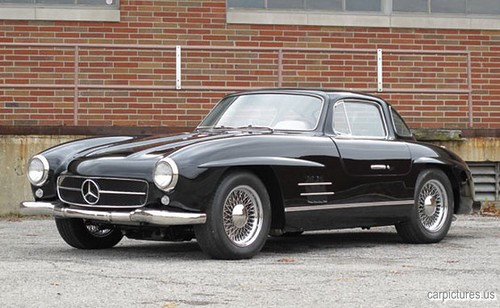
1. **The Enduring Allure of Automotive Icons: Defining a Classic for the Modern Era**To truly grasp the phenomenon of surging vintage Japanese car values, we must first establish a common understanding: what exactly constitutes a “classic car”? The term itself is often applied loosely, varying significantly across different regions and individual perceptions. In the United States, owners might refer to any car over 20 years old as a classic, while in Canada, the accepted benchmark is typically 25 years or older. This lack of a standardized global criterion highlights the subjective nature of the definition, suggesting that age, while a primary indicator, is not the sole determinant.
Beyond mere chronology, the “classic” designation frequently extends to vehicles that possess a certain rarity, historical significance, or unique variant status. These are not just old cars; they are artifacts that encapsulate the design philosophies, technological advancements, and cultural zeitgeist of their production era. A truly classic car transcends its function as mere transportation, becoming a collectible piece of art and engineering, a tangible link to a bygone automotive landscape.
Furthermore, classic vehicles are often characterized by their performance capabilities relative to their contemporaries. This classification commonly encompasses a wide array of muscle cars and sports cars, renowned for their engaging driving dynamics. They typically feature manual transmissions and offer a more direct, unfiltered driving experience than modern vehicles. These cars, often 20 years or older, aren’t just garage queens; they’re used for a variety of purposes, from daily driving to meticulous restoration projects and showcases at prestigious car shows, underscoring their enduring versatility and appeal.
Read more about: Everyone Wants These 14 Classic Cars In Their Garage: A Deep Dive for Enthusiasts
2. **”Old is Gold”: The Special Essence of Classic Vehicles**The phrase “old is gold” resonates deeply within the classic car community, and for vintage vehicles, it often holds true in more ways than one. There’s an undeniable magnetism to classic cars that goes far beyond simple nostalgia; it’s a complex interplay of factors that makes them profoundly captivating. They offer a unique blend of history, artistry, and an immersive experience that modern automobiles, with all their technological advancements, often struggle to replicate.
These vehicles represent a tangible connection to the past, allowing owners to experience automotive history firsthand. Each classic car tells a story, not just of its own journey, but of the era in which it was conceived and manufactured. From the materials used to the engineering solutions implemented, they embody a snapshot of a particular moment in time, offering insights into societal trends, design philosophies, and technological limitations that are invaluable to enthusiasts and historians alike.
The captivation also stems from a certain purity of purpose. Classic cars were often built with a focus on mechanical integrity and driver engagement, before the advent of ubiquitous electronic assists and the homogenization of design. This straightforwardness, combined with their distinct character, creates an emotional bond with owners and admirers. It’s an appreciation for craftsmanship, a respect for legacy, and a pursuit of authenticity that defines the special place these vehicles hold in the hearts of many.
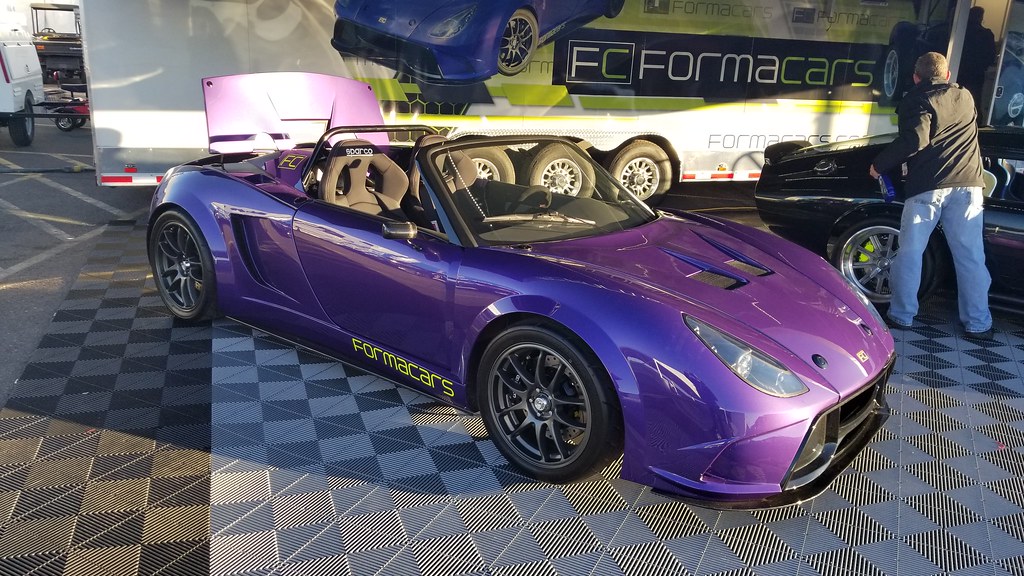
3. **Timeless Design and Unique Appeal: Where Aesthetics Meet Legacy**One of the most compelling reasons for the enduring allure and appreciating value of classic cars, particularly those from Japan’s golden era, lies in their timeless and unique aesthetic appeal. Owning a classic vehicle offers the distinct privilege of possessing a rare and singular model, one whose design connects directly with a rich automotive past. Their lines, proportions, and overall styling transcend fleeting trends, evoking a profound sense of nostalgia and inherent beauty that continues to resonate with successive generations of enthusiasts.
These vehicles often showcase elegant curves, intricate details, and innovative engineering solutions that, for many, possess a charm that modern automobiles often lack due to contemporary design constraints and safety regulations. Imagine piloting a Datsun 240Z, with its iconic long hood seamlessly paired with a fastback rear – such a presence on the road inevitably transforms the driver into an object of widespread attention and admiration. These designs were bold, distinctive, and often groundbreaking, carving out an identity that remains instantly recognizable and deeply cherished today.
The uniqueness also stems from their scarcity. Once original production has ceased, these designs cannot be replicated in their authentic form. This limited availability naturally enhances their desirability and contributes significantly to their status as collector’s items. In an automotive landscape increasingly dominated by similar-looking vehicles, the distinctive silhouette and character of a classic Japanese car stand out, offering a visual and emotional escape to an era where cars were designed with a more individualistic and artistic flair.
Read more about: Beyond the Garage: 15 Vintage Cars That Are Secretly Skyrocketing in Value Right Now
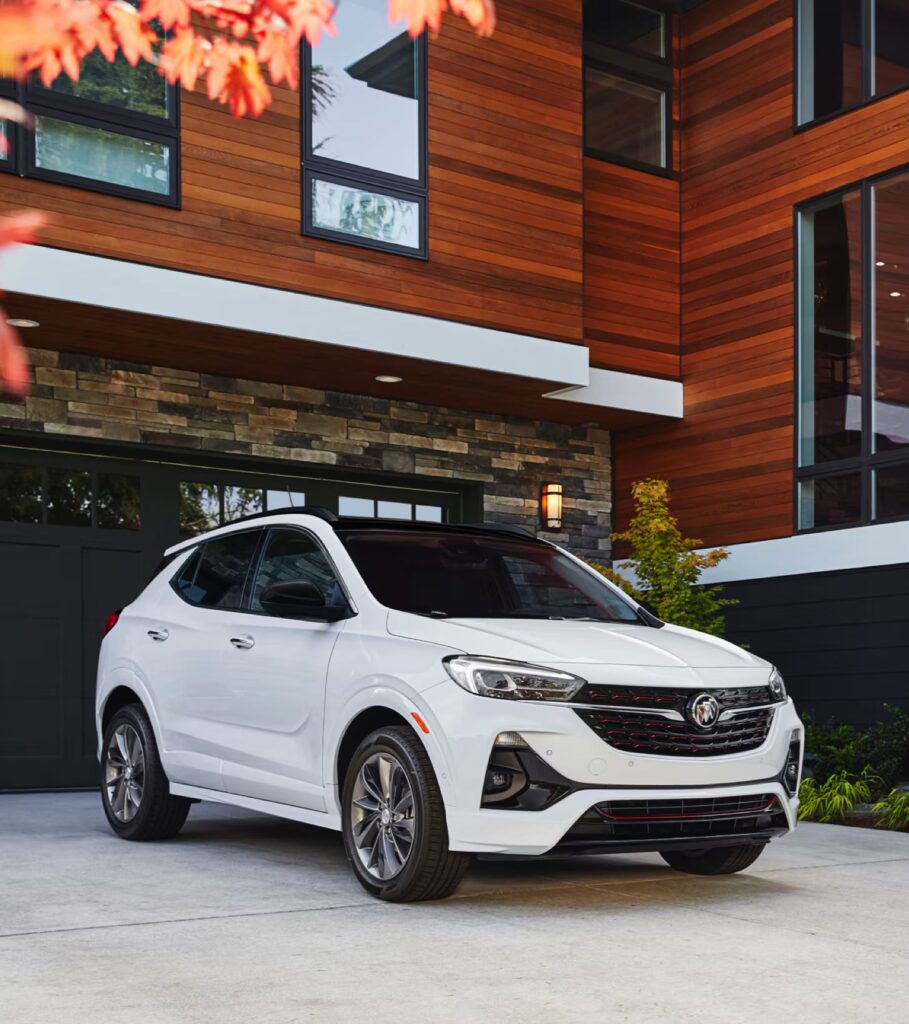
4. **Built to Last: The Reliability Factor and Enduring Engineering**Beyond their striking aesthetics, a significant, perhaps even surprising, benefit of acquiring a classic car lies in their often underestimated reliability. While concerns about age and potential mechanical issues are natural, well-engineered classic models, depending on their specific type, condition, and restoration history, were fundamentally designed to endure. Their construction often involved robust components that, with proper care, could last for an exceptionally long time.
Crucially, the mechanical simplicity of many classic cars, compared to their modern counterparts, means that parts can frequently be fixed or replaced with relative ease. This accessibility to maintenance and repair, often without the need for complex diagnostic computers, empowers owners and specialist mechanics to keep these vehicles running smoothly for decades. A well-maintained classic car, far from being a temperamental relic, can prove to be surprisingly reliable, capable of providing years of enjoyable motoring.
The key to unlocking this longevity lies in diligent ownership. Regular servicing, appropriate storage conditions to protect against the elements, and a proactive approach to addressing any emerging issues are paramount. When these practices are followed, the inherent durability of classic engineering shines through, allowing these magnificent machines to continue gracing our roads and enhancing their investment appeal, proving that their operational lifespan can match their aesthetic timelessness.
Read more about: Automotive Icons Unraveled: The Definitive Account of 15 Star Brands and Models That Fell From Grace
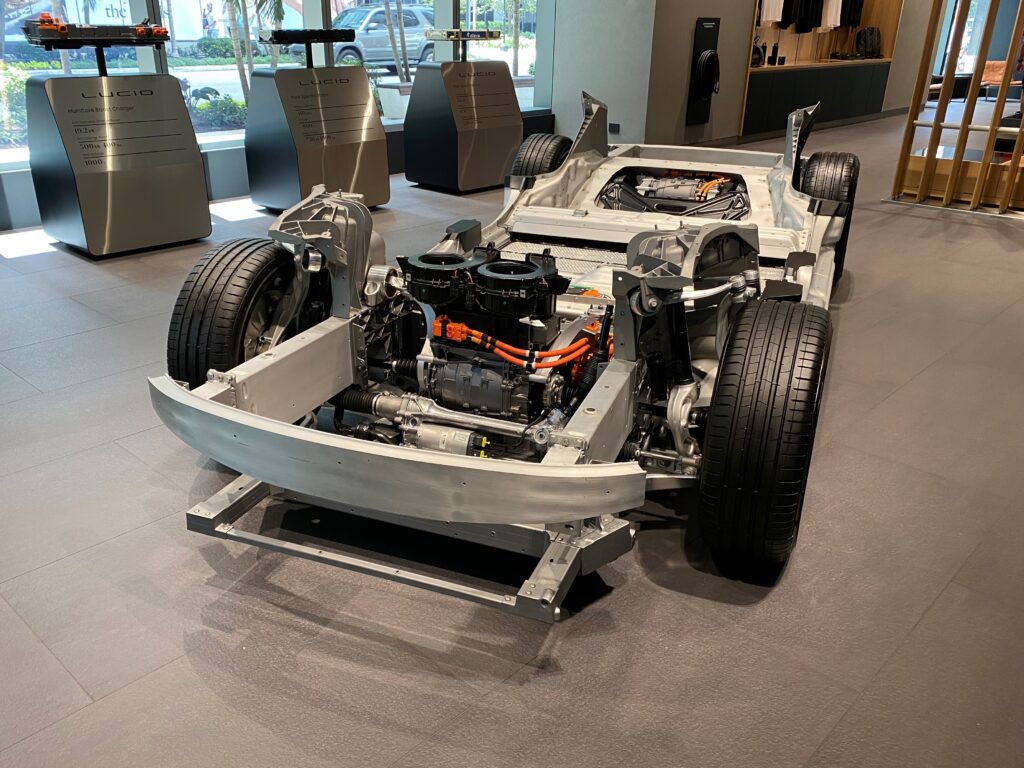
5. **Rolling History: The Narrative of Innovation and Design**Classic cars are far more than mere machines; they are tangible segments of automotive heritage, each one a rich repository of historical significance. Every vehicle from a bygone era carries with it a unique story, a narrative of innovation, technological development, and distinctive design principles that were prevalent during its production. Owning one of these automotive treasures is akin to possessing a “time machine,” offering a direct portal to a moment when particular design philosophies, color palettes, and engineering solutions defined the industry.
These cars reflect the cutting edge of their time, showcasing the ingenuity and vision of their creators. They embody breakthroughs in engine technology, chassis design, and manufacturing processes, often pushing the boundaries of what was thought possible. For instance, the context highlights models like the Nissan Fairlady Z (S30), which introduced advanced features such as four-wheel independent suspension and a potent overhead camshaft six-cylinder engine – attributes typically reserved for much pricier European sports cars of the era, like the Jaguar E-Type and BMW 2800 CS.
This integration of pioneering technology with evocative design tells a compelling story of progress and ambition. It demonstrates how manufacturers, especially those from Japan, were not only capable of competing on a global stage but were actively redefining performance and accessibility. Therefore, driving a classic car is not just about the journey; it’s about participating in a continuous historical dialogue, connecting with the legacy of automotive brilliance that shaped our present.
Read more about: Yuki Tsunoda Ignites History: Piloting Honda’s F1 Pioneer, The RA272, in a 60th Anniversary Spectacle at the Mexican Grand Prix

6. **A Visceral Connection: The Unique Driving Experience**In an age dominated by insulated cabins, silent electric powertrains, and an array of digital driving aids, classic vehicles offer a profoundly different and refreshingly analog driving experience. They demand a higher degree of driver involvement, fostering a more visceral and immediate connection to the road. This engagement is often facilitated by manual transmissions, unassisted steering systems, and brake pedals that provide direct, unfiltered feedback, inviting the driver to become an integral part of the machine’s operation rather than merely an operator.
The sensory immersion offered by a classic car is unparalleled. The distinct sounds of a finely tuned engine revving, the mechanical symphony of gears shifting, and even the unique scent of gasoline and aged materials can powerfully evoke feelings of nostalgia. These elements transport drivers to a simpler time, a period when the act of driving was less about convenience and more about an intimate communion between human and machine, a challenge and a joy in equal measure.
Ultimately, driving a classic vehicle is a multi-sensory adventure, engaging sight, sound, smell, and touch in a holistic manner. The feel of the steering wheel transmitting every nuance of the road, the sight of a long hood stretching before you, the roar of the exhaust – all combine to create the most real driving experience available. This deeply engaging and authentic connection is a powerful draw for enthusiasts, forming a core part of the “specialness” that drives their increasing desirability and value in today’s market.
Read more about: Melissa Gilbert’s Extraordinary Journey: How Her Birth Father Recognized Her on ‘Little House on the Prairie’

7. **An Investment on Wheels: The Appreciating Value of Classics**While the emotional and historical appeals of classic cars are undeniable, their financial trajectory also plays a significant role in their burgeoning market value. Unlike the vast majority of new cars, which begin depreciating the moment they leave the dealership, classic vehicles possess a remarkable ability to appreciate over time. This characteristic positions them not just as objects of passion, but as potentially lucrative investments, often performing comparably to traditional assets like stocks or real estate.
The scarcity inherent in classic cars is a primary driver of this appreciation. As original production lines cease and the number of pristine, well-maintained examples dwindles, their rarity naturally enhances their market value. Furthermore, the aesthetic and engineering qualities that define these vehicles are often seen as irreplicable, adding another layer of desirability that contributes to their upward price trajectory. Securing a vintage car at a favorable price today can indeed translate into a profitable sale down the road, making them attractive to savvy collectors and investors alike.
This dynamic is particularly evident in the current automotive market, where the robust performance of auctions, even amidst broader economic fluctuations, underscores the confidence in classic car values. The blend of a unique driving experience that engages all senses and a timeless appeal ensures that classic vehicles continue to captivate enthusiasts globally. This combination of intrinsic desirability and tangible financial upside firmly establishes them as more than just relics of the past; they are vibrant, appreciating assets in the modern investment landscape.
Read more about: Unlocking Automotive Assets: The 15 Classic Cars Poised for Serious Returns and How to Invest Smartly
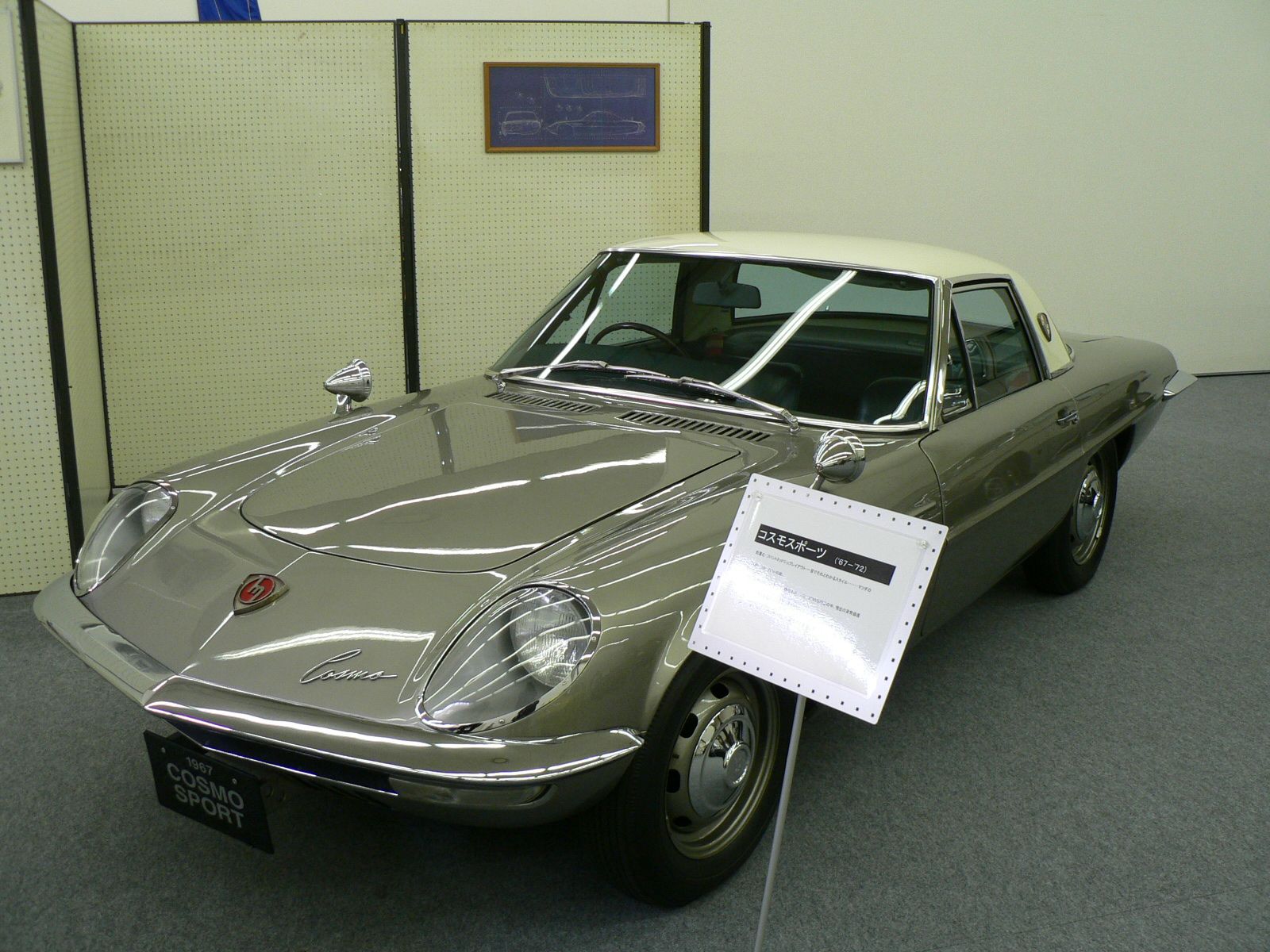
8. **Mazda Cosmo**Transitioning from the foundational attributes of classic cars, we now turn our attention to specific Japanese models that have not only defined an era but are now setting new benchmarks in the collector market. The Mazda Cosmo stands as a monumental entry, serving as Mazda’s distinguished ‘halo car’ and a pioneer in rotary engine technology. Produced from 1967 to 1996, its enduring presence and unique powertrain marked a critical development in automotive engineering, captivating enthusiasts with its blend of innovation and character.
The Cosmo’s mechanical heart, the Rotary Wankel engine, was a revolutionary departure from conventional piston designs, making it exceptionally significant. Notably, the Eunos Cosmo is distinguished as the sole Mazda vehicle to incorporate a sophisticated 3-rotor engine, a testament to Mazda’s audacious engineering vision. This exclusive powerplant, paired with its distinctive aesthetics, contributed immensely to its legendary status, setting it apart in a crowded automotive landscape.
Beyond its engineering marvels, the Cosmo’s design language evokes a profound sense of nostalgia and elegance. Its long hood, gracefully complemented by covered headlights, presents a divine aesthetic, while the rear styling harks back to the experimental, turbine-powered concept cars of the early 1960s. This timeless visual appeal, combined with its profound classic status among JDM models, is reflected in its current market valuation, with an average price now commanding around $68,000, signifying its appreciating value.
Read more about: Consumer Reports Ranks Car Reliability: Lexus, Toyota Lead the Top 15 Brands
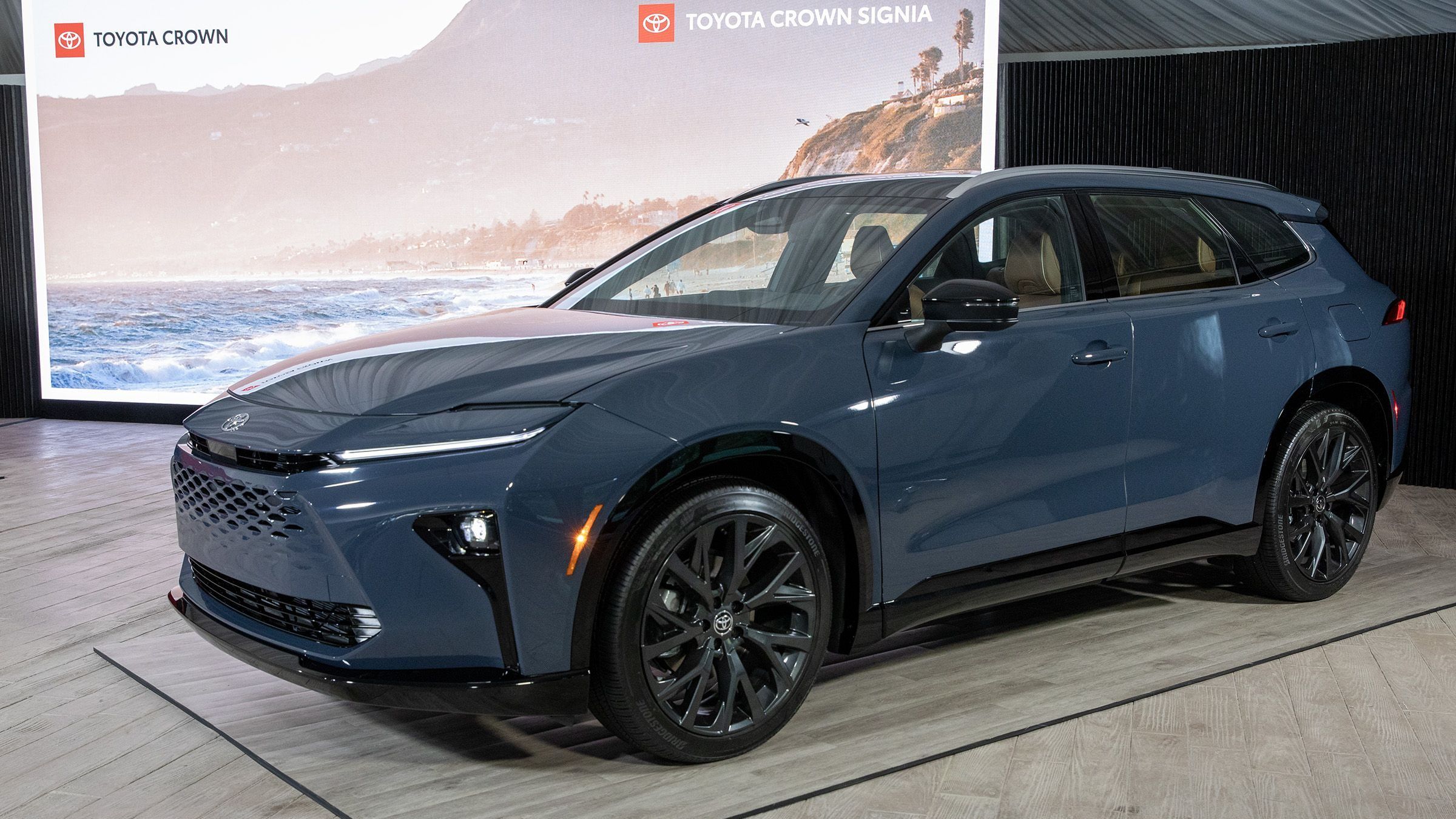
9. **Toyota Celica (1970-1977)**The Toyota Celica, specifically the models produced between 1970 and 1977, holds a significant place in the narrative of Japanese automotive excellence, launching as a stylish two-plus-two coupé derivative of the new Carina in December 1970. This initial iteration quickly became a cornerstone of Toyota’s burgeoning sports car lineup, establishing a reputation for accessible performance and sophisticated design. Its entry into the market marked a pivotal moment for Japanese manufacturers on the global stage.
This early Celica is widely recognized as a well-built sports machine, famed for its impressive reliability, especially when meticulously maintained by its owner. Underneath its sleek skin and agile contours, the design was relatively straightforward, ingeniously sharing many of its core components with other vehicles within Toyota’s extensive collection. This strategic commonality contributed to its robust nature and ease of service, making it a practical choice for enthusiasts seeking a dependable classic.
Adding to its widespread appeal, the Celica was offered in two distinct body styles: a traditional coupe, available from its inception, and a more versatile lift-back, which debuted in Japan in 1973 and subsequently in other global markets by 1976. This variety allowed it to cater to diverse tastes, further cementing its popularity. Today, these early Celica models continue to be sought after, with current market prices ranging from $18,661 to $36,134, demonstrating their enduring desirability as legitimate collectibles.
Car Model Information: 1992 Toyota Celica GT
Name: Toyota Celica
Caption: 1994 Toyota Celica GT-Four (ST205, UK)
Manufacturer: Toyota
Production: December 1970
ModelYears: 1971–2005
Assembly: Susono,Shizuoka Prefecture
Class: Sports car
BodyStyle: unbulleted list
Layout: unbulleted list
Categories: 1980s cars, 1990s cars, 2000s cars, Accuracy disputes from August 2020, All-wheel-drive vehicles
Summary: The Toyota Celica ( or ) is an automobile produced by Toyota from 1970 until 2006. The Celica name derives from the Latin word coelica meaning heavenly or celestial. In Japan, the Celica was exclusive to Toyota Corolla Store dealer chain. Produced across seven generations, the Celica was powered by various four-cylinder engines, and body styles included convertibles, liftbacks, and notchback coupé. In 1973, Toyota coined the term liftback to describe the Celica fastback hatchback, and the GT Liftback would be introduced for the 1976 model year in North America. Like the Ford Mustang, the Celica concept was to attach a coupe body to the chassis and mechanicals from a high volume sedan, in this case the Toyota Carina. The first three generations of North American market Celicas were powered by variants of Toyota’s R series engine. In August 1985, the car’s drive layout was changed from rear-wheel drive to front-wheel drive, and all-wheel drive turbocharged models were manufactured from October 1986 to June 1999. Variable valve timing came in certain Japanese models starting from December 1997 and became standard in all models from the 2000 model year. In 1978, a restyled six-cylinder variant was introduced as the Celica Supra (Celica XX in Japan); it would be spun off in 1986 as a separate model, becoming simply the Supra. Lightly altered versions of the Celica were also sold through as the Corona Coupé through the Toyopet dealer network from 1985 to 1989, and as the Toyota Curren through the Vista network from 1994 to 1998.
Get more information about: Toyota Celica
Buying a high-performing used car >>>
Brand: Toyota Model: Celica
Price: $4,000 Mileage: 127,022 mi.
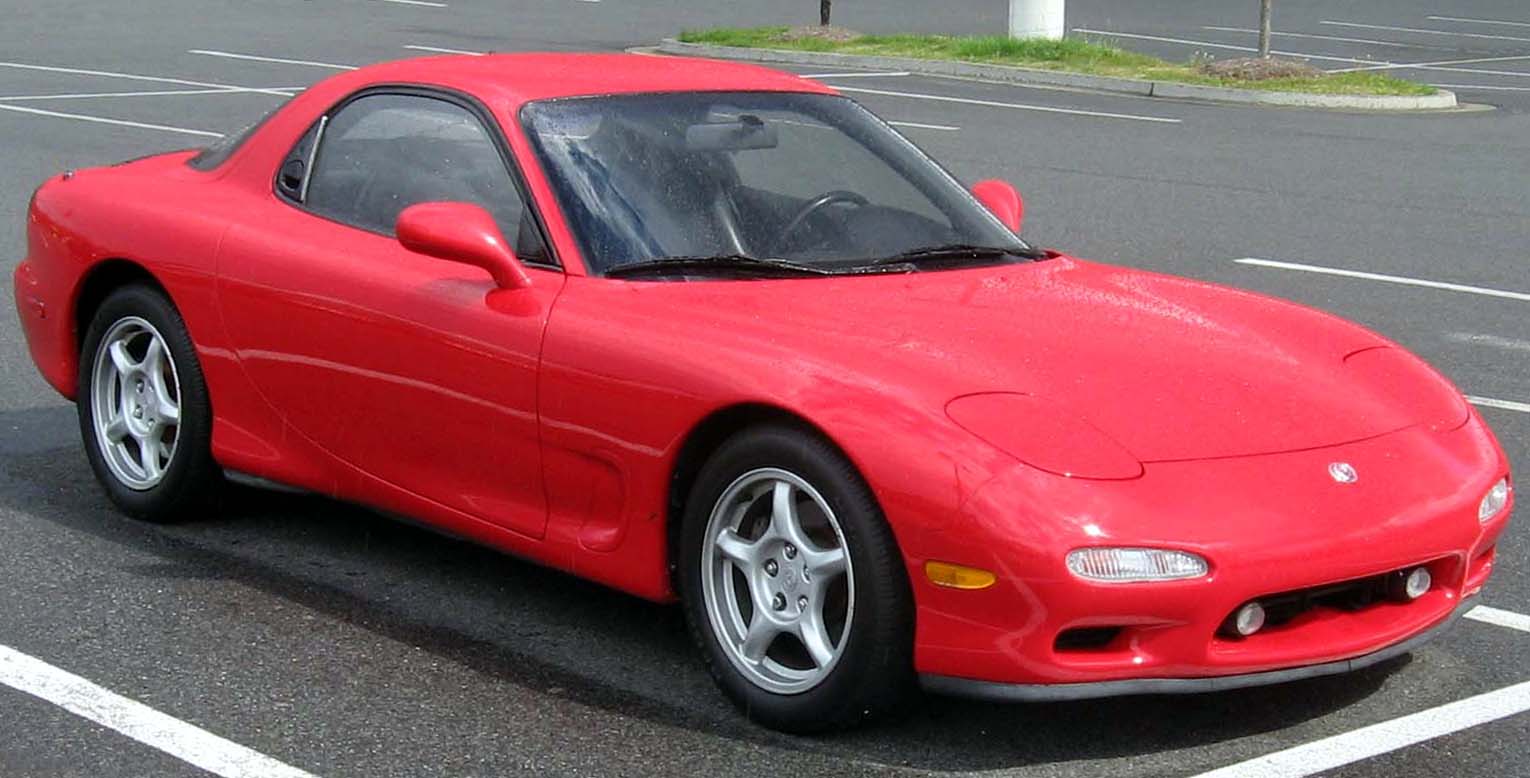
10. **Mazda RX-7 (1979-1985)**Among the pantheon of classic Japanese sports cars, the Mazda RX-7 often stands out, frequently hailed by automotive enthusiasts as one of the greatest cars ever produced. Spanning three generations from 1978 to 2002, the RX-7 cultivated an unrivaled legacy, cementing its status as an iconic machine that blended innovative engineering with dynamic performance. Its distinct character has made it a focal point for collectors and performance aficionados worldwide.
Building upon the foundation laid by the Cosmo, the RX-7 played a crucial role in safeguarding the future of the unique Rotary engine, effectively saving it from potential extinction. Its introduction for the 1979 model year immediately captured widespread attention due to its exclusive rotary powerplant, combined with a strikingly sleek aesthetic and an remarkably accessible price point. This potent combination created an instant sensation in the automotive market, making it an instant legend.
This “rare beast” quickly became a sensation, drawing in a dedicated following who appreciated its light weight, exceptional handling, and high-revving engine. Today, the first-generation Mazda RX-7 (1979-1985) continues to be a highly coveted classic sports car, with enthusiasts actively searching for well-preserved examples. Its distinctive design and unique driving experience ensure its enduring appeal and appreciating value in the collector’s realm.
Car Model Information: 1986 Mazda RX-7 GXL 2D Coupe
Name: Mazda RX-7
Caption: 1994 Mazda RX-7 R2 (FD3S)
Manufacturer: Mazda
Aka: Mazda Savanna RX-7 (Japan, 1978–1991),Mazda ɛ̃fini RX-7 (Japan, 1991–1997)
Class: Sports car
Production: 1978–2002,811,634 produced
Assembly: Hiroshima
Platform: Mazda F platform
Layout: Front-engine, rear-wheel-drive layout#Front mid-engine, rear-wheel-drive layout
Predecessor: Mazda RX-3
Successor: Mazda RX-8
Categories: 1980s cars, 1990s cars, 2000s cars, 24 Hours of Le Mans race cars, All articles needing additional references
Summary: The Mazda RX-7 is a front mid engine, rear-wheel-drive, rotary engine-powered sports car, manufactured and marketed by Mazda from 1978 through 2002 across three generations, all of which incorporated the use of a compact, lightweight Wankel rotary engine.
The first-generation RX-7, codenamed SA (early) and FB (late), is a two-seater two-door hatchback coupé. It featured a 12A carbureted rotary engine as well as the option for a 13B rotary engine with electronic fuel injection in later years. The second-generation RX-7, carrying the internal model code FC, was offered as a two-seater coupé with a 2+2 option available in some markets, as well as in a convertible body style. This was powered by the 13B rotary engine, offered in naturally aspirated or turbocharged forms. The third-generation RX-7, model code FD, was offered as a two-seater coupé with a 2+2 version offered as an option for the Japanese market. It featured a sequentially turbocharged 13B REW engine.
More than 800,000 RX-7s were manufactured over its lifetime.
Get more information about: Mazda RX-7
Buying a high-performing used car >>>
Brand: Mazda Model: RX-7
Price: $13,991 Mileage: 52,352 mi.

11. **Nissan Fairlady Z (S30)**The Nissan Fairlady Z, known as the Datsun 240Z for export markets, represents a monumental achievement in Japanese automotive history, produced by Nissan from 1969 until 1978. This model was a true game-changer, shattering preconceived notions about what an affordable sports car could be, and directly challenging established European counterparts with its blend of style, performance, and value. Its impact was immediate and profound.
The S30 chassis boasted advanced features that were remarkably competitive for its era and price point. It notably incorporated four-wheel independent suspension and a potent overhead camshaft six-cylinder engine, specifications typically reserved for much pricier European sports cars of the time. These sophisticated attributes were found in models like the Jaguar E-Type and the BMW 2800 CS, underscoring the Fairlady Z’s exceptional engineering and ambitious market positioning.
By offering such an affordable yet stylish and performance-oriented sports car, the Nissan Fairlady Z introduced the global automotive community to the formidable capabilities and inherent reliability of Japanese vehicles. Its success laid the groundwork for future generations of high-performance JDM cars. The enduring legacy and desirability of these classic models are reflected in their current valuation, which can range from $15,137 to an impressive $167,679, appealing to a wide spectrum of collectors and enthusiasts.
Car Model Information: 2021 Cadillac Escalade Premium Luxury
Name: Nissan Fairlady Z (Datsun 240Z, 260Z, and 280Z)
Aka: unbulleted list
Manufacturer: Nissan
Production: 1969–1978
Class: Sports car
Layout: Front-engine, rear-wheel-drive layout
Assembly: Hiratsuka, Kanagawa
BodyStyle: unbulleted list
Designer: Yoshihiko Matsuo
Predecessor: Datsun Sports
Successor: Nissan Fairlady Z (S130)
Caption: 1970–1973 Nissan Fairlady Z
Categories: 1970s cars, All Wikipedia articles written in American English, All articles with unsourced statements, Articles with short description, Articles with unsourced statements from February 2021
Summary: The Nissan S30, sold in Japan as the Nissan Fairlady Z but badged as the Datsun 240Z, 260Z, and 280Z for export, are 2-seat sports cars and 2+2 GT cars produced by Nissan from 1969 until 1978. The S30 was conceived of by Yutaka Katayama, the President of Nissan Motor Corporation U.S.A., and designed by a team led by Yoshihiko Matsuo, the head of Nissan’s Sports Car Styling Studio. It is the first car in Nissan’s Z series of sports cars.
The S30 had four-wheel independent suspension and a powerful straight-six engine with an overhead camshaft, features identified with far more expensive premium European sports cars and coupés such as the Jaguar E-Type and BMW 2800 CS, but absent from similarly priced sports cars such as the Alfa Romeo Spider, MGB and Opel GT, which had smaller four-cylinder engines and rear live axles. The S30’s styling, engineering, relatively low price, and impressive performance resonated with the public, received a positive response from both buyers and the motoring press, and immediately generated long waiting lists.
As a halo car, the S30 broadened the acceptance of Japanese carmakers beyond their image as producers of practical and reliable but prosaic and unfashionable economy cars. Datsun’s growing dealer network—compared to limited production imported sports cars manufactured by Jaguar, BMW, Porsche, Alfa Romeo, and Fiat—ensured both easy purchase and ready maintenance.
The S30 was initially sold alongside the smaller four-cylinder Datsun Sports, which was dropped from production in 1970. The S30 240Z is unrelated to the later 240SX, sold as the Silvia in Japan.
Get more information about: Nissan Fairlady Z (S30)
Buying a high-performing used car >>>
Brand: Nissan Model: Fairlady Z
Price: $62,985 Mileage: 40,649 mi.
Read more about: Unearthing Hidden Performance: 14 Underrated Sports Cars That Defy Expectations for Today’s Performance Seekers

12. **1999 Nissan Skyline GT-R (NISMO-restored)**As generational tastes continue to shift, the focus in the collector car market is increasingly turning towards iconic Japanese performance machines, a trend vividly underscored by the strong auction performance of specific models. A prime example is the NISMO-restored 1999 Nissan Skyline GT-R, a vehicle that transcends mere transportation to embody a pinnacle of JDM engineering and cultural significance. Its appearance on the auction block is always met with intense anticipation.
This particular example, meticulously brought back to factory-fresh glory by Nissan’s in-house performance division, recently demonstrated its market prowess at Broad Arrow’s Monterey Jet Center Auction. It achieved a significant sale price of $692,500, a figure that not only highlights the exceptional quality of a NISMO restoration but also the premium value now placed on these revered performance legends. Such results are indicative of their rapidly appreciating status.
Broad Arrow, in its post-auction analysis, explicitly “spotlighted its growing focus on Japanese performance cars,” noting that such strong prices reflect “the strength of modern collectibles as generational tastes continue to shift.” The 1999 Nissan Skyline GT-R, especially in such a pristine and authenticated state, is a clear bellwether for this trend, firmly establishing its position as a high-value modern collectible that will only continue to attract discerning investors and passionate enthusiasts.
Car Model Information: 2021 Cadillac Escalade Premium Luxury
Name: Nissan Skyline GT-R
Caption: 2002 Nissan Skyline GT-R V·spec II (BNR34)
Manufacturer: Nissan
Production: unbulleted list
Assembly: unbulleted list
Class: Sports car
Related: unbulleted list
Transmission: unbulleted list
Predecessor: Nissan Skyline#BLRA-3 Skyline Sport
Successor: Nissan GT-R
Categories: 1970s cars, 1980s cars, 1990s cars, 2000s cars, 24 Hours of Le Mans race cars
Summary: The Nissan Skyline GT-R is a Japanese sports car based on the Nissan Skyline range. The first cars named “Skyline GT-R” were produced between 1969 and 1972 under the model code KPGC10, and were successful in Japanese touring car racing events. This model was followed by a brief production run of second-generation cars, under model code KPGC110, in 1973. After a 16-year hiatus, the GT-R name was revived in 1989 as the BNR32 (“R32”) Skyline GT-R. Group A specification versions of the R32 GT-R were used to win the Japanese Touring Car Championship for four years in a row. The R32 GT-R also had success in the Australian Touring Car Championship, with Jim Richards using it to win the championship in 1991 and Mark Skaife doing the same in 1992, until a regulation change excluded the GT-R in 1993. The technology and performance of the R32 GT-R prompted the Australian motoring publication Wheels to nickname the GT-R “Godzilla” in its July 1989 edition. Wheels then carried the name through all the generations of Skyline GT-Rs, most notably the R34 GT-R, which they nicknamed “Godzilla Returns”, and described as “The best handling car we have ever driven”. In tests conducted by automotive publications, R34 GT-R have covered a quarter of a mile (402 metres) in 12.2 seconds from a standing start time and accelerated from 0–100 km/h (0–62 mph) in 4.4 seconds. The Skyline GT-R became the flagship of Nissan performance, showing many advanced technologies including the ATTESA E-TS all-wheel drive system and the Super-HICAS four-wheel steering. Today, the car is popular for import drag racing, circuit track, time attack and events hosted by tuning magazines. Production of the Skyline GT-R ended in August 2002. The car was replaced by the GT-R (R35), an all-new vehicle based on an enhanced version of the Skyline V36 platform. Although visibly different, the two vehicles share similar design features and are manufactured in the same factory. The Skyline GT-R was never manufactured outside Japan, and the sole export markets were Hong Kong, Singapore, Australia and New Zealand, in 1991, and the UK (in 1997, due to the Single Vehicle Approval scheme). They are also popular across the world as used Japanese imports. Despite this, the Skyline GT-R has become an iconic sports car as a grey import vehicle in the Western world (mainly the United Kingdom, Australia, New Zealand, South Africa, Ireland, Canada, and the United States). It has become notable through pop culture such as The Fast and the Furious, Initial D, Shakotan Boogie, Tokyo Xtreme Racer, Wangan Midnight, Need for Speed, Forza, Driving Emotion Type-S, Test Drive, and Gran Turismo. In 2019, Nismo announced that it would resume production of spare parts for all generations of the Skyline GT-R, including body panels and engines.
Get more information about: Nissan Skyline GT-R
Buying a high-performing used car >>>
Brand: Nissan Model: Skyline GT-R
Price: $62,985 Mileage: 40,649 mi.

13. **Subaru Impreza 22B STi**Continuing to chart the meteoric rise of Japanese domestic market legends, the Subaru Impreza 22B STi stands out as another automotive icon commanding substantial attention and high prices at auction. This limited-production, rally-bred masterpiece is not merely a car; it’s a tangible piece of motorsport history, celebrated for its aggressive styling, exceptional performance, and direct lineage to Subaru’s World Rally Championship dominance.
Its allure was prominently displayed at Broad Arrow’s Monterey Jet Center Auction, where a fine example of the Subaru Impreza 22B STi fetched an impressive $235,200. This result, achieved within an estimated range of $200,000 to $250,000, signifies the robust demand for these specialized JDM machines. It underscores that collectors are increasingly valuing rarity, racing heritage, and unique engineering that sets these cars apart from mass-produced models.
The 22B STi’s performance in the auction sphere firmly positions it as a significant modern collectible. Its unique specifications, including its distinctive widebody, EJ22G engine, and strictly limited production run, contribute to its heightened desirability. As a vehicle that encapsulates a specific golden era of rally racing and Japanese automotive engineering, it continues to captivate a new generation of enthusiasts and investors, solidifying its place in the pantheon of appreciating assets.
Car Model Information: 2021 Cadillac Escalade Premium Luxury
Name: Subaru Impreza
Caption: 2024 Subaru Impreza hatchback (GU)
Manufacturer: Subaru
Production: 1992–present
Predecessor: Subaru Leone
Successor: Subaru WRX
Class: Compact car
BodyStyle: coupe
Layout: Front-engine, front-wheel drive layout
Categories: 2000s cars, 2010s cars, 2020s cars, All-wheel-drive vehicles, All Wikipedia articles written in American English
Summary: The Subaru Impreza is a compact car that has been manufactured by the Japanese automaker Subaru since 1992. It was introduced as a replacement for the Leone, with the predecessor’s EA series engines replaced by the new EJ series. It is now in its sixth generation. Subaru has offered a 5-door hatchback body variant since 2008. The firm also offered a coupé from 1995 until 2001, a 4-door sedan up to the fifth generation, and a 5-door wagon from the Impreza’s introduction which was replaced by a hatchback with the third generation in 2008. Mainstream versions have received “boxer” flat-four engines ranging from 1.5- to 2.5-liters, with the performance-oriented Impreza WRX and WRX STI models upgraded with the addition of turbochargers. Since the third generation series, some markets have adopted the abbreviated Subaru WRX name for these high-performance variants. The first three generations of Impreza were also available with an off-road appearance non-SUV package called the Outback Sport, exclusive to the North American market. For the fourth generation, this appearance package was raised up to be subcompact crossover SUV and renamed the XV (Crosstrek in North America), and is sold internationally. Colloquially, the car is sometimes referred to as Scooby. Subaru has offered front- and all-wheel drive layouts for the Impreza. Since the late-1990s, some markets have restricted sales to the all-wheel drive model, putting the Impreza in a unique selling proposition in the global compact class, which is usually characterized by front-wheel drive. Japanese models remain available in both configurations. A 2019 iSeeCars study named the Impreza as the lowest-depreciating sedan in the United States after five years.
Get more information about: Subaru Impreza
Buying a high-performing used car >>>
Brand: Subaru Model: Impreza 22B STi
Price: $62,985 Mileage: 40,649 mi.
Read more about: 12 Affordable Cars and Brands That Consistently Excel in Reliability and Low Repair Costs

14. **1995 Toyota Supra RZ**Rounding out our spotlight on the Japanese classics making waves in the auction market, the 1995 Toyota Supra RZ exemplifies the enduring power and increasing financial recognition these vehicles command. Revered globally for its iconic design, formidable performance, and legendary 2JZ-GTE engine, the Supra RZ has long been a dream car for many and a symbol of 1990s Japanese engineering prowess.
The market’s fervent appetite for this particular model was vividly demonstrated at Broad Arrow’s Monterey Jet Center Auction. A 1995 Toyota Supra RZ closed the sale on a remarkably high note, decisively “exceeding estimates at $80,640” against a pre-sale expectation of $40,000 to $70,000. This significant jump above its initial valuation showcases the intense bidding competition and escalating demand for pristine examples of this JDM powerhouse.
This strong auction result underscores a clear market trend: the Supra RZ is no longer just a beloved tuner car, but a bona fide high-value modern collectible. Its ability to command such a premium, particularly as the very last lot of a significant auction event, sends a powerful message about the shifting landscape of automotive appreciation. It firmly establishes the 1995 Toyota Supra RZ as an appreciating asset, poised for further gains as its legacy continues to grow and captivate enthusiasts globally.
Car Model Information: 2023 Toyota Supra A91 Edition
Name: Toyota Supra
Caption: Toyota GR Supra (J29/DB)
Manufacturer: Toyota
Aka: unbulleted list
Production: unbulleted list
Class: Sports car
BodyStyle: fastback,coupé
Layout: Front-engine, rear-wheel-drive layout
Predecessor: Toyota Celica (A20)
Categories: 1980s cars, 1990s cars, 2000s cars, 2010s cars, 2020s cars
Summary: The Toyota Supra is a sports car and grand tourer manufactured and developed by the Toyota Motor Corporation beginning in 1978. The name “supra” is a definition from the Latin prefix, meaning “above”, “to surpass” or “go beyond”. The initial four generations of the Supra were produced from 1978 to 2002. The fifth generation has been produced since March 2019 and later went on sale in May 2019. The styling of the original Supra was derived from the Toyota Celica, but it was longer. Starting in mid-1986, the A70 Supra became a separate model from the Celica. In turn, Toyota also stopped using the prefix Celica and named the car Supra. Owing to the similarity and past of the Celica’s name, it is frequently mistaken for the Supra, and vice versa. The first, second and third generations of the Supra were assembled at the Tahara plant in Tahara, Aichi, while the fourth generation was assembled at the Motomachi plant in Toyota City. The 5th generation of the Supra is assembled alongside the G29 BMW Z4 in Graz, Austria by Magna Steyr. The Supra traces much of its roots back to the 2000GT owing to an inline-6 layout. The first three generations were offered with a direct descendant to the Crown’s and 2000GT’s M engine. Interior aspects were also similar, as was the chassis code “A”. Along with this name, Toyota also included its own logo for the Supra. It was derived from the original Celica logo, being blue instead of orange. This logo was used until January 1986, when the A70 Supra was introduced. The new logo was similar in size, with orange writing on a red background, but without the dragon design. That logo, in turn, was on Supras until 1991 when Toyota switched to its current oval company logo. The dragon logo was a Celica logo regardless of what colour it was. It appeared on the first two generations of the Supra because they were officially Toyota Celicas. The dragon logo was used for the Celica line until it was also discontinued. In 1998, Toyota ceased sales of the fourth-generation Supra in the United States. Production of the fourth-generation Supra for worldwide markets ended in 2002. In January 2019, the fifth-generation Supra, which was co-developed with the G29 BMW Z4, was introduced.
Get more information about: Toyota Supra
Buying a high-performing used car >>>
Brand: Toyota Model: Supra
Price: $60,000 Mileage: 9,774 mi.
Read more about: Navigating Your Golden Years: 12 Sports Cars Retirees Might Want to Reconsider for a Stress-Free Ride
As we’ve delved into the compelling narrative of vintage Japanese performance cars, it becomes unequivocally clear that these aren’t merely automobiles; they are vibrant pieces of history, engineering marvels, and cultural touchstones that have transcended their original purpose. Their unique blend of meticulous design, robust reliability, and a visceral driving experience creates an emotional connection that modern vehicles, for all their advancements, often struggle to replicate. From the pioneering rotary power of the Mazda Cosmo to the rally-bred aggression of the Subaru 22B STi and the iconic might of the Toyota Supra RZ, these JDM legends are more than just appreciating assets; they are shaping the very definition of modern collecting. The recent auction results, with their record-breaking sales and exceeded estimates, affirm that the world has indeed woken up to the irreplaceable charm and tangible value these Japanese masterpieces offer. For discerning collectors and passionate enthusiasts alike, the journey into the world of vintage Japanese cars is not just an investment in metal and rubber, but an embrace of a profound and exhilarating automotive legacy.”

